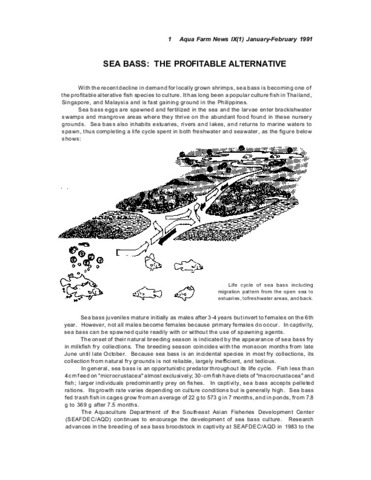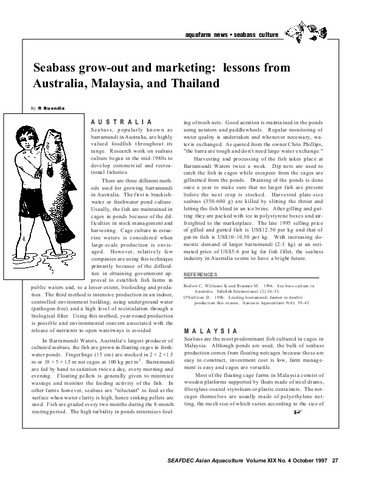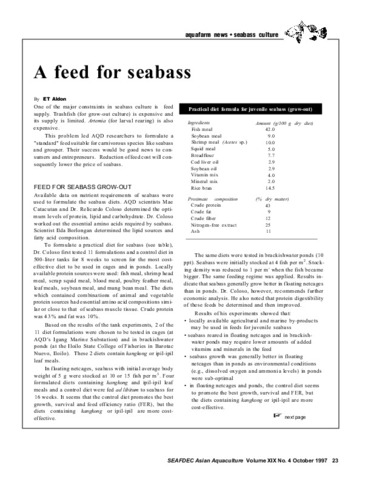Hatchery rearing of sea bass Lates calcarifer Bloch
- Global styles
- MLA
- Vancouver
- Elsevier - Harvard
- APA
- Help

View/
Date
1991Page views
1,919ASFA keyword
AGROVOC keyword
Taxonomic term
Metadata
Perlihat publikasi penuh
Share
Abstract
A hatchery rearing scheme for sea bass (Lates calcarifer Bloch) is described. Survival rate from hatching (d0) to harvest (d30) was 34%. Feeding sea bass fry with Chlorella-fed or Selco-enriched instar II Artemia from d19 to d23 resulted in similar survival rates (74%), total length (8.2 and 8.9 mm) and weight (8.9 and 12.1 mg) at d30. Although sea bass fry fed 2.5, 5 or 10 Artemia/ml/day from d14 to d20 exhibited similar survival rates (73-93%), fish were significantly larger as feed density increased (7.1, 8.2, 9.8 mm total length and 2.4, 4.3, 9.7 mg wet weight, respectively). The significance of this study lies in providing technical information on artificial production of sea bass fry.
Suggested Citation
Parazo, M. M., Reyes, D. M., Jr., & Avila, E. M. (1991). Hatchery rearing of sea bass Lates calcarifer Bloch. The Philippine Scientist , 28, 65-76. http://hdl.handle.net/10862/1346
Type
ArticleISSN
0079-1466Koleksi
- Journal Articles [1258]
Related items
Showing items related by title, author, creator and subject.
-
Sea bass: The profitable alternative
Southeast Asian Fisheries Development Center, Aquaculture Department (Aquaculture Department, Southeast Asian Fisheries Development Center, 1991) -
Seabass grow-out and marketing: lessons from Australia, Malaysia, and Thailand
Buendia, Romeo (Aquaculture Department, Southeast Asian Fisheries Development Center, 1997) -
A feed for seabass
Aldon, E. T. (Aquaculture Department, Southeast Asian Fisheries Development Center, 1997)One of the major constraints in seabass (Lates calcarifer) culture is feed supply. Details are given of work conducted at AQD regarding the formulation of a 'standard' feed suitable for carnivorous species like the seabass ...





